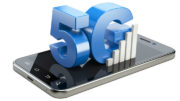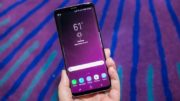Wireless chargers. We love ’em. We have quite a few to choose from at Solid Signal. All the new high end phones feature wireless charging now and it’s about time. We jumped on the bandwagon early as you can see from this 2010 video.
Wireless charging uses a process called induction which transfers power over short distances using targeted radio broadcasting technology. That’s a simple explanation but it’s good enough for this article. The most common wireless chargers use the Qi standard so they can be shared with many different devices.
“Feeling hot, hot, hot”
No, I’m not talking about the inexplicable staying power of this video. I’m talking about the way your phone feels when you take it off the wireless charger. A lot of people have noticed that the place where the phone touches the charger is mighty warm. Almost to the point of where people are worried.
After all, it wasn’t too long ago that Samsung’s phones were literally bursting into flames, and there are plenty of YouTube videos where people claim their phones caught on fire. Like any YouTube video (except for ours of course) these should be taken with a grain of salt.
But regardless, phones do get hot when charging wirelessly. Is this a problem?
Why hot phones happen
Heat is almost always caused by the same thing: inefficiency. Engines get hot because they can’t convert all the energy of exploding gasoline into movement. People get hot because they can’t effectively metabolize sugar completely when they are exercising, and because the friction of movement is inefficient. The same is true here. Phones get hot when they’re charging because the battery is not 100% efficient in absorbing and storing the power it gets.
Wireless charging is inefficient by its very nature. Air doesn’t conduct electricity anywhere near as well as a wire does. So, there is going to be some heat in the process. The battery itself may be part of the issue as well. A lot of the energy of the charging pad doesn’t translate out to usable power and it’s expressed as heat.
But should you be worried?
The people at the Qi consortium have determined that in every case they’ve tested, the heat isn’t a real concern. But I would take that one step further. There is no way they have tested every phone and every combination of case. Some cases are thicker, leading to less efficient energy transfer. Some are made from man-made materials which are more likely to melt under extreme heat. But let’s just say, in general, that it’s not going to be an issue.
Is there anything you can do?
I test a lot of wireless charging gear and I always look very carefully for scorch marks or melted plastic after long charging sessions. I’ll be honest, I’ve never seen any. But there’s always the possibility that you will. Also, I tend to think that it’s best to stay with the standard charging speed if you have a big fat case. I would not try to use a Fast Charger if you have a big case like an Otterbox. Maybe that’s superstition on my part but if you’re trying to put twice the current through a big thick case you’ll have to be careful.
For the most part I would not worry about wireless charging and heat. The phone will automatically shut down if it gets too hot, keeping it from getting damaged. That should also stop charging before it gets dangerous. Still, it’s a good idea to do some very carefully monitored tests and keep flammable materials away from your phone charger. I mean, that’s just common sense.
This article is brought to you by SolidSignal.com. Shop now at Solid Signal for the best in cellular accessories!





